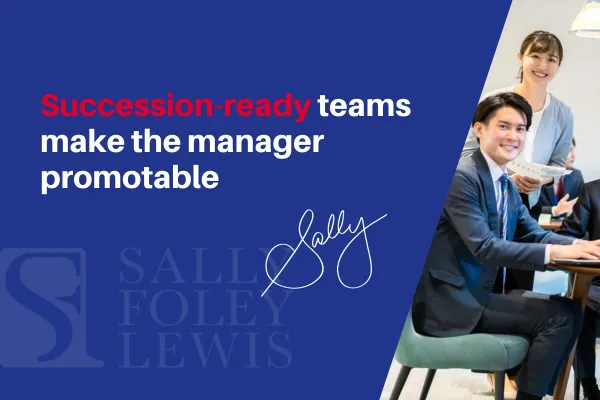
Succession-ready teams make the manager promotable
A Costco warehouse manager with more than two decades’ service shared a simple career tip: if you want to get promoted, move where the company is growing and make sure your team can run without you. He described a colleague who relocated to a newer market and was promoted to assistant warehouse manager within four years. The pattern behind the tip is the real lesson. Costco opens new sites by drawing on experienced people from existing warehouses, which only works when current managers have built teams and individuals who can take over their shifts, sections and KPIs without missing a beat. Internal promotion is the norm, and succession readiness is the engine behind it (1). Costco’s broader track record reinforces the point: the company has sustained performance despite CEO transitions, a hallmark of a mature succession culture (2).
Why does this matter for middle managers like you? Because promotability is not just about your personal results. It’s about whether the business can lift you out without disruption. When your team is succession-ready, you reduce risk for your upline, accelerate internal mobility, and demonstrate that your leadership scales.
This is not unique to retail. Enterprise Mobility (known for car rentals), long known for promoting from within, reported about 20,000 internal promotions in a single year, a level only possible when managers consistently develop deputies who can step up (3 & 4). Career profiles from Enterprise show Area Managers who started as Management Trainees and emphasise growing others as the path to progression (5). In logistics, UPS openly states that more than 18,000 leaders, or roughly 55 percent of its management ranks, were promoted from hourly roles. That depth of internal talent only works when supervisors and managers prepare successors to take the controls of routes, hubs and customer desks (6).
The burger that makes you promotable

When these ingredients are in place, the burger is robust enough to serve itself. That is exactly what your executives want to see before they consider you for the next kitchen.
Three drivers for promotability:

Pipeline: role-based skills matrix, learning paths, and stretch assignments.
Platform: rituals and systems that codify knowledge, cadences, and decision rights.
Profile: visibility and sponsorship so successors are known to decision-makers.
What the evidence says
Internal mobility keeps talent and momentum. LinkedIn’s Workplace Learning Report links strong learning cultures with higher internal mobility and retention, which in turn enables smoother role moves and backfills (7).
Culture of promoting from within sustains performance. Costco’s founder Jim Sinegal has long championed deep internal development, reflected in public analyses of the firm’s enduring performance and culture (8).
Succession is risk management. Even older but still relevant guidance highlights how succession reduces operational risk and preserves continuity, which is exactly why promotable managers are those who leave a strong bench behind (9).
Make your team succession-ready in 6 moves
Map critical work. Identify the roles, decision rights and moments that matter each week.
Cross-train quarterly. Use rotations and acting-up stints. Track coverage in a living skills matrix.
Name successors. Two per critical role, each with a 6 to 12-month plan and specific stretch projects.
Codify the platform. SOPs, run/play-books and checklists must be findable, current and taught.
Practise decisions. Give successors real calls to make before they step into the title, then debrief decision quality.
Profile your bench. Sponsor your people so your upline knows who they are and what they can run.
If you do not build a bench
Your promotion stalls because you are seen as indispensable rather than scalable. Key person risk spikes when you take leave. Replacement costs rise because external hires take longer and ramp more slowly. Most importantly, engagement dips when people cannot see a path forward, which undermines retention and performance (7).
Your takeaway
Executives promote managers who make themselves safely replaceable. Costco, Enterprise Mobility and UPS prove the pattern at scale: internal mobility only works when managers build real successors. Treat your leadership like a burger that holds together without you. When the burger is solid, the chef is promotable.